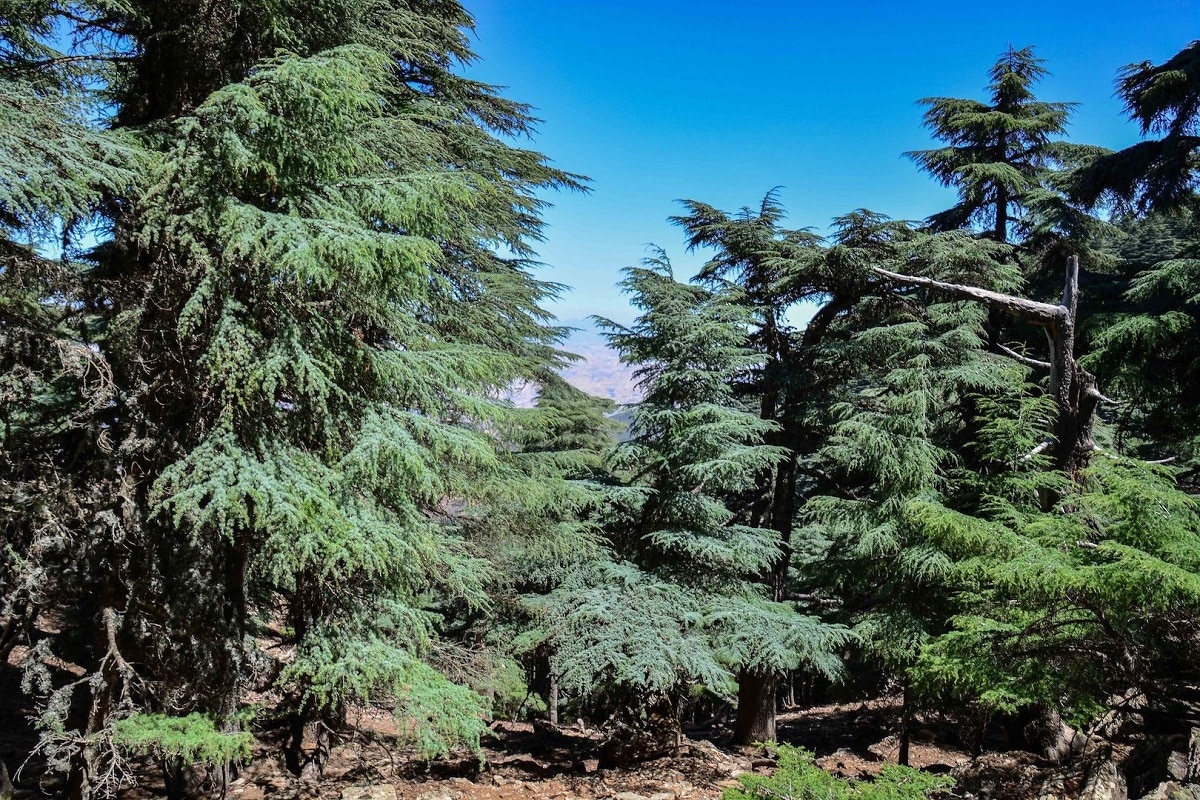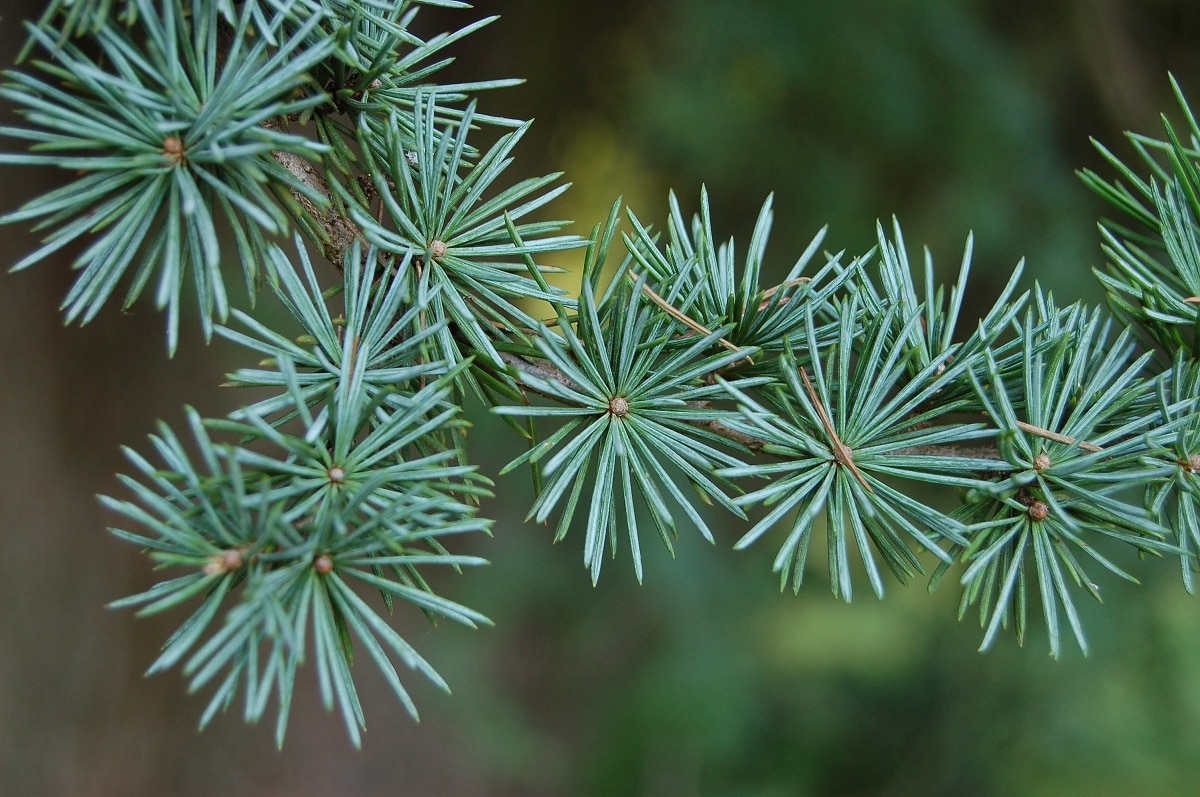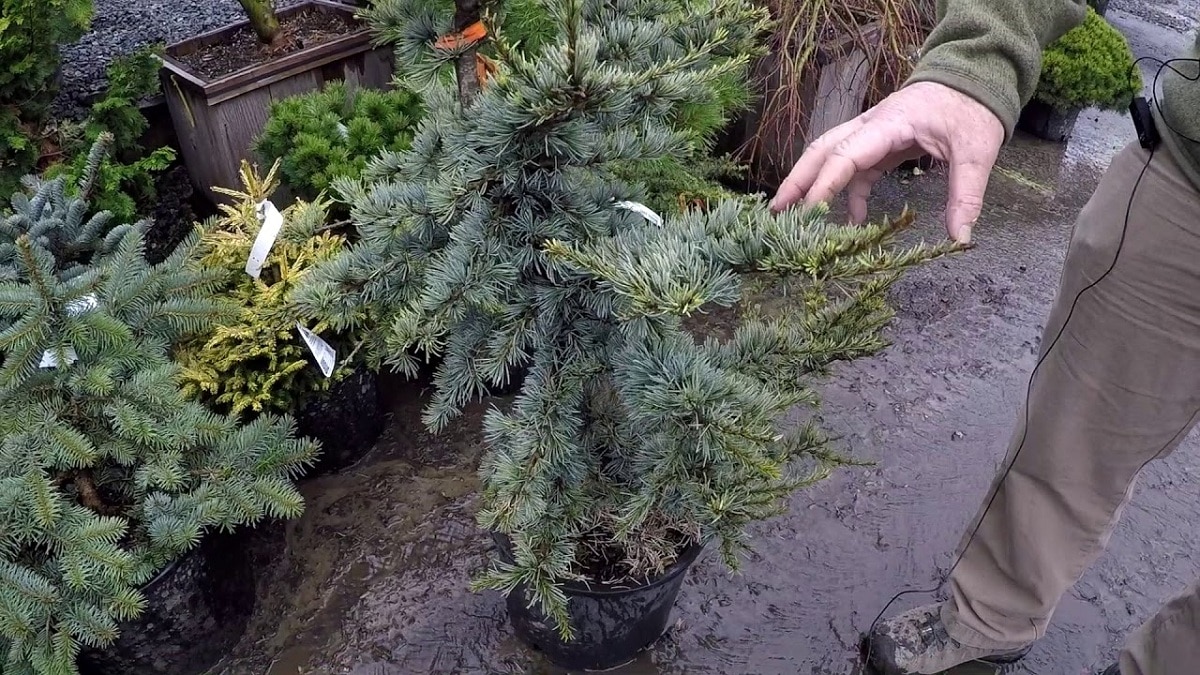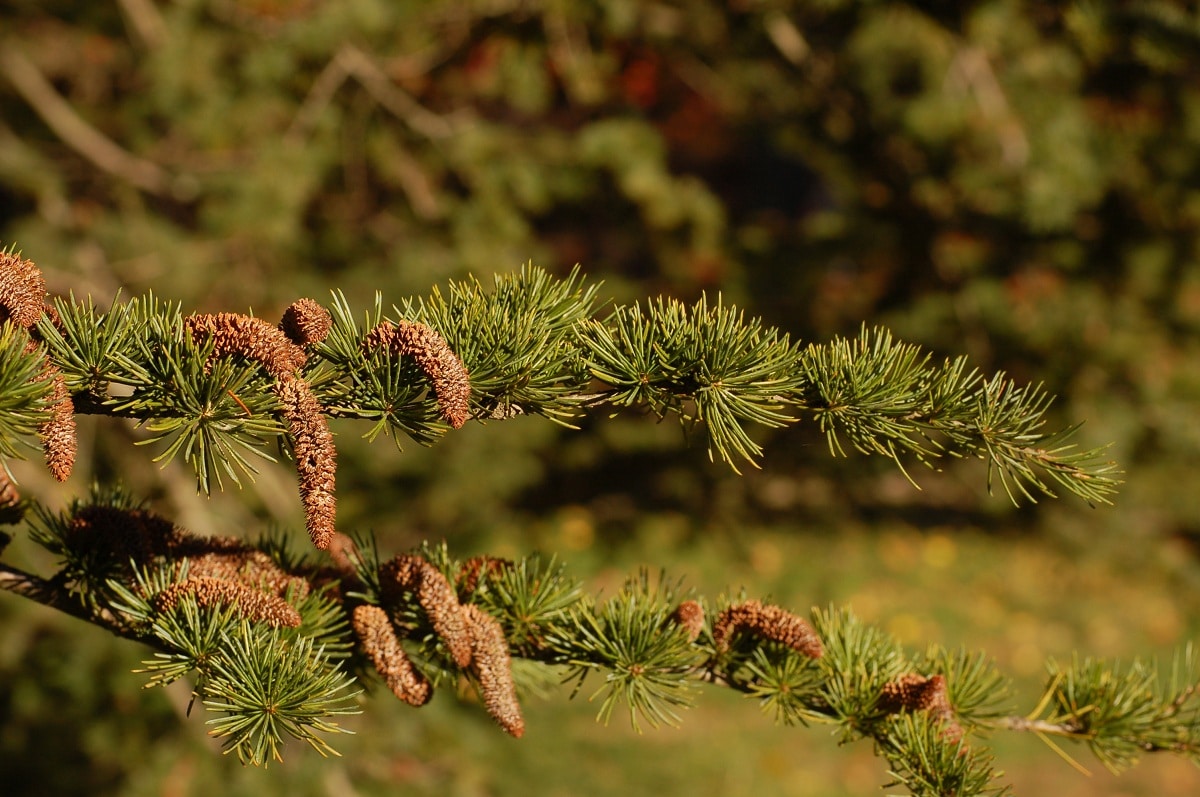
Within the group of gymnosperms we find the group of conifers. Today we are going to talk about Cedrus atlantic. It is a type of conifer that is evergreen and is widely used in larger parks and gardens. It is capable of providing good shade and an ideal place to spend the day with the family. It is interesting to have both as a solitary specimen and as a group. Although it is quite slow to grow, if properly cared for, it can live for hundreds of years.
In this article we are going to tell you all the characteristics, cultivation and care of the Cedrus atlantic.
Key features

This evergreen tree goes by the popular names Atlantic cedar, silver cedar, and Atlas cedar. It needs some somewhat more specific environmental conditions to live, since its origin comes from the mountainous areas of Algeria and Morocco. If it can grow in a wide space, it is capable of reaching a height of between 30-40 meters. It can have a fairly thick trunk of about two meters in diameter.
As for its crown, it tends to be pyramidal in shape when grown alone. This shape reminds us of a cone. Hence comes the group of conifers. From its branches sprout acicular leaves classic of the coniferous group of a color between green and bluish. These leaves can measure between 10-25 mm and they are grouped on the brachyblasts. These leaves that grow on the brachyblasts, are stems that arise from the same leaves.
As a curiosity, it is thought that if a Cedrus atlantic It has been artificially planted from the beginning, it has softer needles than those of those specimens found in nature. As for the cones, it has both male and female cones. The female cones differ from the male ones in that they are larger, usually measuring between 9-10 centimeters long.
Uses of Cedrus atlantic

As we have mentioned before, it is a perfect tree for public spaces since it gives a fairly large shadow. It is grown primarily for an ornamental decorative purpose. The only disadvantage that it presents that most people do not like is that it has a somewhat slower growth. However, it is a tree that, when developed, looks great in gardens and public spaces.
During the time of growth and development it can be grown in a pot for many years due to its slow growth. In this way, it is transplanted little by little as it develops and time passes. Another use is that of wood. In France it is widely used thanks to its good quality wood. And it is a suitable wood for carpentry work, furniture and veneers.
Requirements of Cedrus atlantic

Keep in mind that these specimens can be bought in stores, but you have to know their physical characteristics and calculate the size that he will arrive when he is an adult. The place where you are going to plant it in your garden will depend on it. A corner where there are no obstacles and that can serve as a quiet place for when it provides good shade is recommended. One of the most common mistakes is to buy a plant before finding out about its rusticity. We are going to see what are the main requirements that the Cedrus atlantic to grow in good condition.
First of all is the location. You need to be outside in a sunny location. If you plant directly from the ground, you need to at least ten meters from a swimming pool or floors that are paved. Therefore, it is recommended to use the corner of the garden. It is also important to leave a separation of about 5 meters between this tree and any other. In this way, both can have a good development and their roots can be extended correctly.
As for the earth, as long as it is young and we have planted it in a pot, a universal substrate can be used. If we sow it in the garden, it is a somewhat more demanding plant. It can grow without problems in soils rich in organic matter, as long as they are well drained. Drainage is the ability of the soil to absorb rain or irrigation water. This tree does not tolerate puddles since its roots can rot.
Irrigation in the Cedrus atlantic it must be meager. It does not need a lot of water like other plants. The natural place where this tree grows has a Mediterranean climate. In these regions the rains are usually torrential and seasonal. Most of them coincide with the end of the summer. During the first year after sowing it is recommended to water it from time to time about twice a week more or less during the summer months so that it can root well. In the event that we have it in a pot, we must continue watering throughout the year.
Care and reproduction
Some of the care that the Cedrus atlantic is the subscriber. It is highly recommended to pay in spring and summer. You can use compost, chopped herbs, banana peels, cow manure, worm castings, green pruning remains, etc. If you grow it in a pot, you can use some fertilizers or liquid fertilizers, always taking into account that there is no fertilizer overdose.
The time to plant it is in late winter when the temperatures begin to be more pleasant. If you are sowing it in a pot, it needs to be switched to a larger one every 4 years or so. It can be multiplied by seeds. They have to sow in winter, since they need to be cold to germinate. Withstands frost well with temperatures of up to -20 degrees and high temperatures up to 35 degrees. This range of temperatures means that we do not have to worry too much about protecting the plant in case of more extreme weather.
I hope that with this information you can learn more about the Cedrus atlantic, its characteristics and the care it needs.